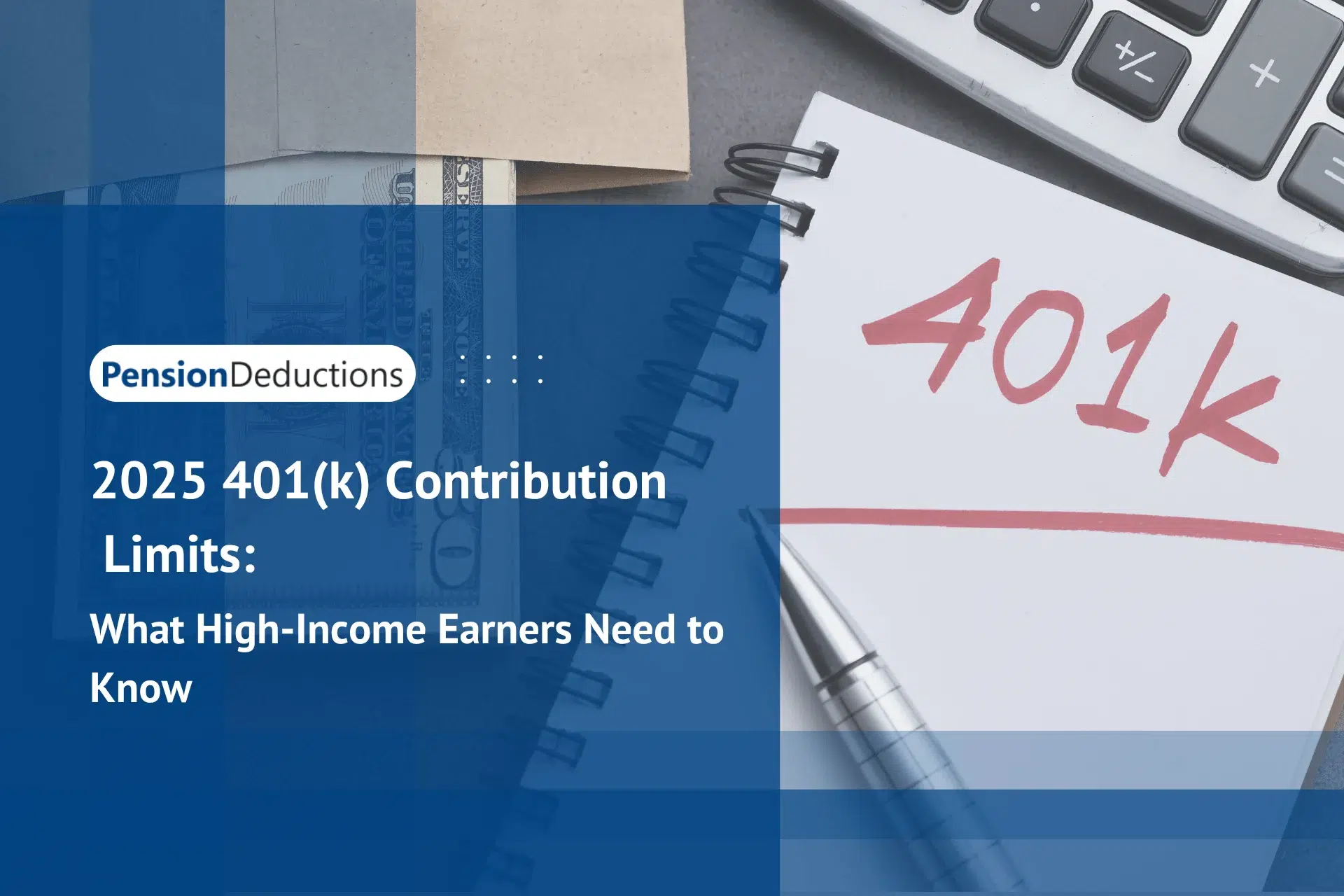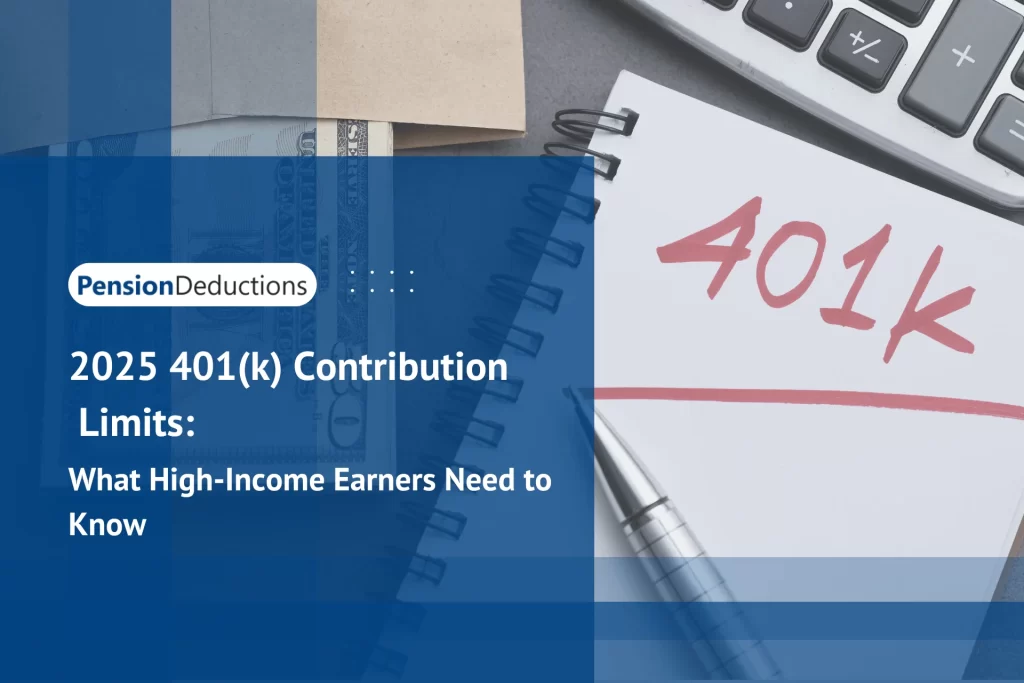Bigger Limits, Bigger Opportunities
For those who want to accelerate their retirement savings—and those navigating tax complexities—the latest 401k limits offer powerful opportunities. Here’s what you need to know.
What Are the New 2025 401k Contribution Limits?
- Employee elective deferral limit: $23,500 (up from $23,000 in 2024)
- Catch-up contribution (age 50+): $7,500 (unchanged from 2024)
- Enhanced catch-up (ages 60–63 only) : $11,250 (new SECURE 2.0 provision)
- Total contribution limit (employee + employer) : $76,500 (up from $73,500)
Why These Changes Matter for High-Income Earners
Key Benefits:
- Higher tax-deferred savings: Reduce taxable income significantly.
- Catch-up power: If you’re behind on retirement planning, ages 60–63 are now prime years for acceleration.
- Employer leverage: Pair your own deferrals with company profit-sharing to max out limits.
Understanding the SECURE 2.0 Catch-Up Twist
What This Means:
- No upfront tax deduction.
- Tax-free growth and withdrawal in retirement.
- Ideal for those expecting to be in a higher tax bracket later.
Total Contribution Strategy: High-Income Optimization
-
Profit-Sharing Plans
Employers can contribute up to 25% of compensation, bringing your total up to $76,500.
-
Cash Balance Plans
For six-figure earners, cash balance plans can allow $100K–$300K+ in additional contributions annually.
-
Mega Backdoor Roth IRA
If your 401k allows after-tax contributions, you can contribute even more and convert it into a Roth IRA—potentially adding $30,000+ more per year.
401k Contribution Limits 2025 for Business Owners
- Elective Deferral (Employee): $23,500
- Employer Profit Share: Up to 25% of salary
- Total Max: $76,500 (if under 50) or $88,750 (if aged 60–63)
Common Mistakes to Avoid in 2025
- Missing Roth Catch-Up Rules: If you’re 60–63 and earn over $145,000, your catch-up must be Roth. Plan accordingly.
- Over-Contributing: Watch your employer’s match so your total doesn’t exceed the $76,500 cap.
- Neglecting Spousal Options: If married, double your household deferral potential.
- Not Revisiting Allocation: Higher limits require smarter portfolio management. Don’t just save—optimize.
Tips to Maximize Contributions Before Year-End
- Automate contributions to max out monthly.
- Use bonus season to make large lump-sum additions.
- Review income forecasts and adjust deferrals for tax efficiency.
- Meet with a retirement plan advisor to strategize combining plans.
Calculate your Contributions Today!
Click here to Calculate!401k Limit Breakdown by Age Group (2025)
Age | Employee Limit | Catch-Up | Total Limit |
|---|---|---|---|
Under 50 | $23,500 | – | $66,000 |
50–59 | $23,500 | $7,500 | $73,500 |
60–63 | $23,500 | $11,250 (Roth) | $76,500 |
64+ | $23,500 | $7,500 | $73,500 |
Future Trends to Watch
- Annual inflation-based increases to contribution limits
- More Roth-style defaults due to SECURE Act mandates
- Higher integration between 401k, HSA, and pension vehicles
Conclusion
Speak with a tax advisor or retirement planner now to align your financial goals with the new limits.
Frequently Asked Questions (FAQs)
1. What is the 401k contribution limit for 2025?
2. Is the catch-up contribution taxed?
3. What’s the total 401k contribution limit including employer match?
4. Can I contribute to both a 401k and a cash balance plan?
5. What if I over-contribute to my 401k?
SHARE THIS POST

Learn the updated 401k contribution limits 2025 and discover advanced savings strategies tailored to high-income professionals.

State-Facilitated Retirement Programs like CalSavers and OregonSaves are expanding access and transforming retirement planning in 2025. Learn More.

Generation X and Retirement: Discover smart strategies to avoid costly mistakes and secure your future with effective financial planning.

Discover the key differences between a Defined Benefit Plan vs 401k, and find the best pension plan for small business owners.



